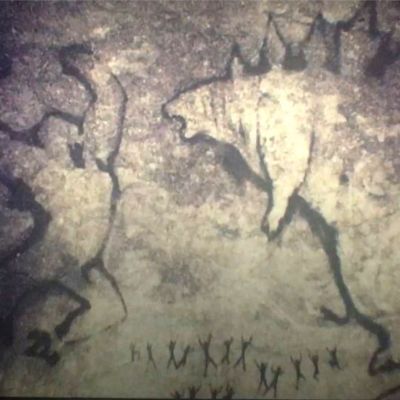Godzilla vs. Kong: A Brief History of Mechagodzilla
The big lizard's robotic doppelganger has lurked around the franchise for decades before Godzilla vs. Kong.
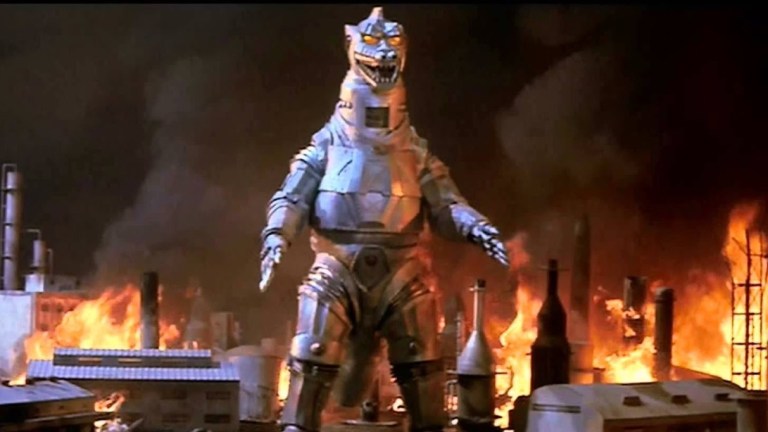
this article contains spoilers for godzilla vs. kong.
It may not have quite the cache or iconic status of Mothra or King Ghidorah, but Mechagodzilla has managed to become a consistent element in the Godzilla movie universe for years. And now the metallic wonder makes its Hollywood debut (not counting Ready Player One) in director Adam Wingard’s Godzilla vs. Kong, the fourth film in the modern MonsterVerse that kicked off in 2014 with Gareth Edwards’ Godzilla.
Ever since making its first appearance in 1974’s Godzilla vs. Mechagodzilla, the gigantic robotic reptile has stuck around as a relatively constant thorn in the side of his flesh-and-blood counterpart. If Ghidorah, Rodan, and Mothra are the Joker, Penguin, and Catwoman to Godzilla’s Batman, then Mechagodzilla hovers near the top of the second tier of rogues, the equivalent to a Two-Face or Mr. Freeze.
Mechagodzilla’s first appearance some 47 years ago came during the Showa era of the original Toho Studios series of Godzilla films. It was the result of some creative brainstorming following two absolutely terrible entries in the series, Godzilla vs. Gigan (1972) and Godzilla vs. Megalon (1973), which featured two of the big lizard’s more uninspiring enemies–a cyborg with a buzzsaw in its stomach and an oversized beetle, respectively.
Faced with the task of freshening up the Godzilla movies via some better antagonists, Toho execs were intrigued by the success of the robot anime genre in Japan at the time, and also wanted to recycle the idea of Mechani-Kong, the android Kong seen in the animated 1966 series The King Kong Show and the largely disastrous 1967 film, King Kong Escapes. Between Mechani-Kong, Gigan, and the robot Jet Jaguar, mechanical monsters already had a presence in Toho’s kaiju films, paving the way for Mechagodzilla.
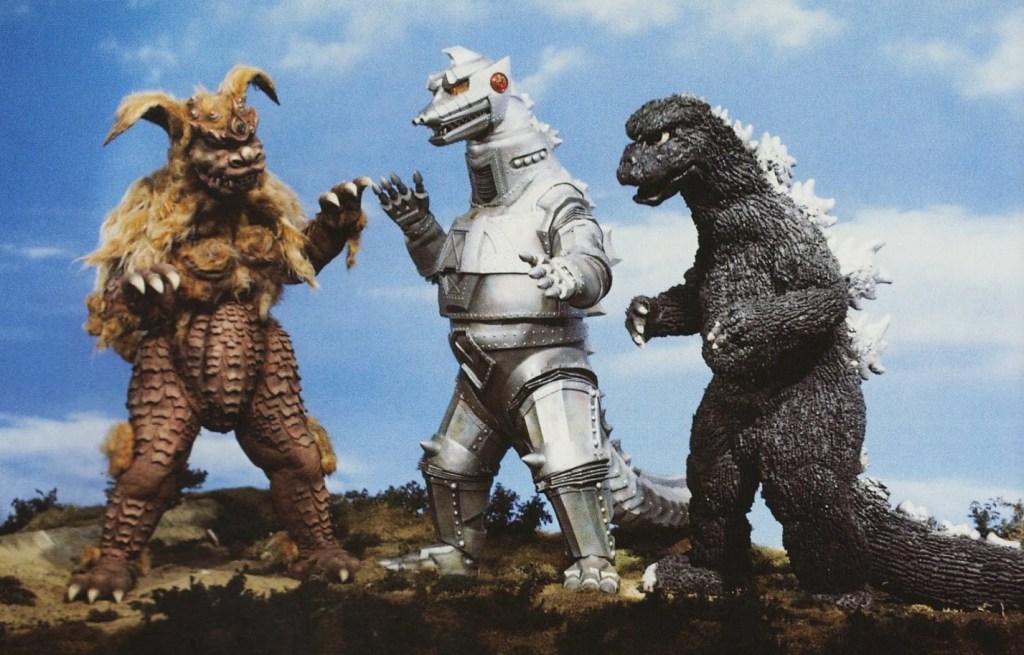
Mechagodzilla in the Showa era
In Godzilla vs. Mechagodzilla, the title villain is the creation of alien invaders from the “Third Planet of the Black Hole,” who plan to use the robot to conquer Earth. Mechagodzilla’s initial rampage–in which it’s actually disguised as Godzilla–sets it against veteran Godzilla ally Anguirus, before Godzilla himself gets involved and goes head to head with the robot. A third monster–the massive protector deity King Caesar, also making his screen debut–gets involved in the action as well, helping the big G defeat his metallic counterpart in a rousing finale.
Godzilla vs. Mechagodzilla, which didn’t arrive in the U.S. until 1977, under the name Godzilla vs. the Bionic Monster, earned somewhat more at the box office than Godzilla vs. Megalon, even though the franchise was well past its glory days. Critics were a little kinder to the movie too, although not that much: Monthly Film Bulletin pointed out that it could have been “much less shambling than it was.”
Nevertheless, Toho tried again the following year with Terror of Mechagodzilla, the 15th film in the Godzilla series and the last of the initial Showa era. Even though it marked the return of director Ishiro Honda, who had helmed some of the franchise’s biggest classics, Terror ended up becoming (relative to inflation) the lowest grossing entry of all the Godzilla films–a distinction it sadly holds to this day.
The story followed a plot hatched by a mad scientist and the same aliens from the previous film to rebuild Mechagodzilla and team it up with a new monster called Titanosaurus in the hope of defeating Godzilla and wiping out humankind, but our fire-breathing hero and his human allies eventually smack that scheme down.
Interestingly, the screenplay for Terror of Mechagodzilla was written by Yukiko Takayama, who won a contest to provide Toho with an original story for its next Godzilla movie. Takayama’s initial concept for Titanosaurus was a pair of creatures called Titans–which is, of course, the overall name given to the giant creatures that now inhabit the MonsterVerse movies, including in Godzilla vs. Kong. The Titans in Terror were combined into one monster due to budget concerns.
Two Titans, or one lonely Titanosaurus, it didn’t matter much, because the financial struggle of Terror led to Toho ending the Showa era and putting the entire Godzilla franchise on ice for nearly 10 years. But while the big G re-emerged in 1984 with The Return of Godzilla (a.k.a. Godzilla 1985), it would be another nine years until a shiny new version of his mechanical opponent turned up in the Heisei era.
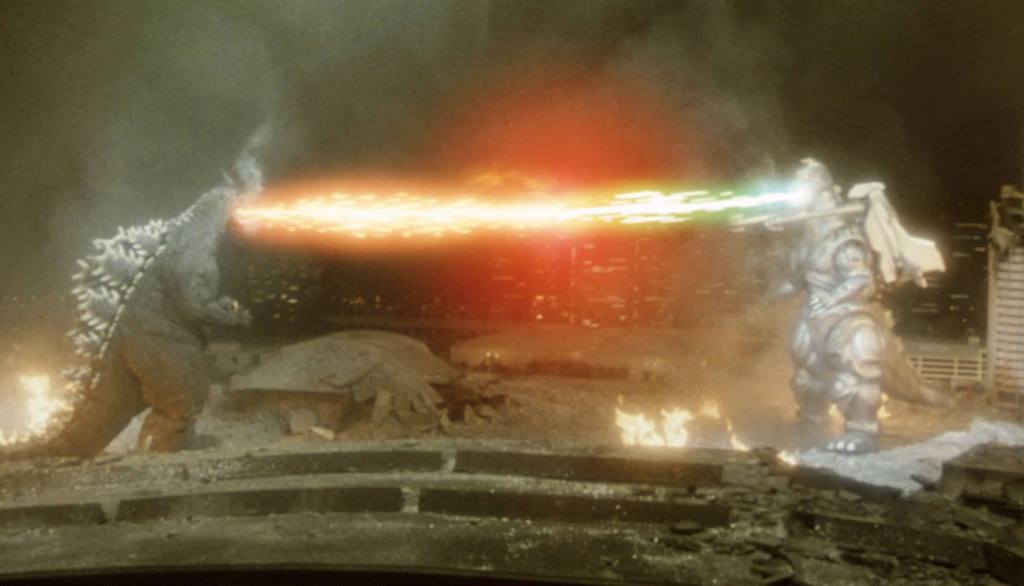
A new Mechagodzilla for the Heisei era
1993 brought Godzilla vs. Mechagodzilla II, the 20th film in the franchise and, strangely enough, not a sequel to the 1974 film of the same name. This time out, the United Nations’ military anti-Godzilla unit, G-Force, uses the remains of Mecha-King Ghidorah from the previous film, Godzilla vs. King Ghidorah, to create two machines capable of battling Godzilla: a weaponized aircraft called Garuda and a robot named–you guessed it–Mechagodzilla.
G-Force also has another advantage: it’s in possession of a new Baby Godzilla and uses the infant’s cries to lure Godzilla into battle with Mechagodzilla and Garuda. The latter two ultimately merge into something called Super-Mechagodzilla, and just when it looks like the big green guy is on the ropes, Rodan (who had been nearly killed by the machines earlier in the movie) shows up for a late assist.
As with the other films of the Heisei era, Godzilla vs. Mechagodzilla II benefits from a more serious approach and better special effects than were available in the 1960s and ‘70s, earning the film good reviews and decent box office. The Mechagodzilla suit itself was much more rounded than its predecessor in the earlier films, although still played by a man inside.
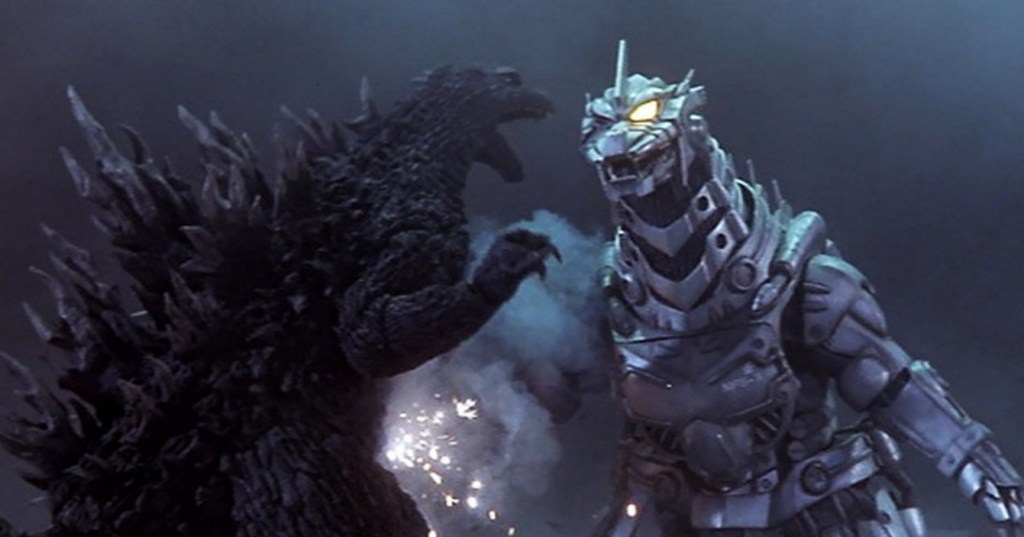
Mechagodzilla enters the Millennium era
It was another nine years before Mechagodzilla showed up again, and it was after the Heisei era had ended and the Millennium era began. The movie was 2002’s Godzilla Against Mechagodzilla, and like the other movies in this era, it ignored the events all previous movies except the original Gojira and essentially rebooted Mechagodzilla.
In this case, Mechagodzilla, nicknamed Kiryu, is literally built on the skeleton of the original Godzilla by the Japan Self-Defense Forces. It’s piloted remotely by humans, but the plan to use it against Godzilla backfires when memories of the original Godzilla’s death are triggered in the robot, causing it to go on a rampage of destruction. The Self-Defense Forces eventually regain control of it and send it into battle against its counterpart, although this time the movie ends in a draw.
Mechagodzilla seemed to strike a chord with audiences and critics again, as reviews and box office for the film were among the strongest of the Millennium era. That is perhaps also why Mechagodzilla returned a year later for Godzilla: Tokyo S.O.S., the 27th Toho film and second to last of the Millennium era. It was also (unusual for this run of films ) a direct sequel to its predecessor, picking up with Kiryu being refitted following the damage it sustained in the previous movie.
It’s theorized that Godzilla keeps coming back to fight Kiryu because of the bones that are part of the robot’s design, so plans are made to shut down the robot and instead let Mothra defend the human race from Godzilla. But when Mothra herself is defeated by the giant fire-breathing dinosaur, the Self-Defense Force has no choice but to let Kiryu get back to work. The film ends with monster and robot plunging to the bottom of the ocean, with a sequel strongly hinted at.
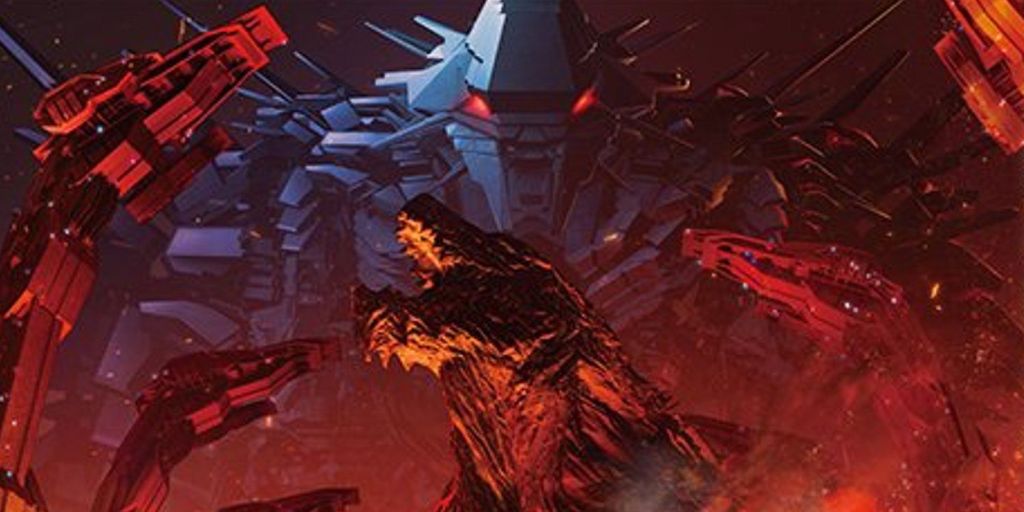
A modern Mechagodzilla in the Reiwa era
There was one more live-action Godzilla film from Toho in this sequence, Godzilla: Final Wars, but Mechagodzilla sat that one out. Yet a new edition of the cyborg would show up in the so-called Reiwa era, making brief appearances in two of the films from the anime Godzilla trilogy.
In the first, Godzilla: Planet of the Monsters (2017), it was built by humans and aliens to counteract Godzilla, but is never activated after the latter destroys the construction facility. In the follow-up, Godzilla: City on the Edge of Battle (2018), nanometal remnants of Mechagodzilla are used to rebuild the facility as well as three battlesuits, but the complex itself, dubbed “Mechagodzilla City,” begins absorbing everything around it under the direction of the aliens, until Godzilla destroys it.
And that was it for Mechagodzilla until it was revealed only recently that a new version of the robot was created for Godzilla vs. Kong. While the previous versions of the robot had solid metal bodies–albeit changing over time from a very mechanical to a more organic look–the new Mechagodzilla is harsh, skeletal and chain-like, powered by the surviving neural network of a severed Ghidorah head and piloted through the combination of a remote control panel and a telepathic human–until a new power source makes it self-aware and able to control itself.
Just as its appearance has changed over the years, so has Mechagodzilla’s arsenal of weapons, which started with missiles and energy rays and graduated to more powerful and plentiful versions of those, while adding plasma grenades, laser cannons and shock anchors in later movies. The “Absolute Zero” flash freezing cannon also came later, while the new Hollywood edition uses a red proton beam, plasma fists, and shoulder-mounted missile launchers, along with a nasty-looking drill on the end of its tail.
“The idea of Mechagodzilla in a big MonsterVerse version, in a Hollywood kind of grounded reality, just sounded so cool,” enthuses Godzilla vs. Kong director Adam Wingard about including the robot in the new movie. “To be a director that gets a chance to put their own spin on the design of that, it was just like I had to do this movie from there. They would have had to convince me not to at that point.”
Mechagodzilla has regularly made lists of Godzilla’s most fearsome enemies, so it’s easy to see why it was selected to become the one antagonist that could possibly take on both Godzilla and Kong. Some 47 years after the robot first came clanking to life, it’s getting to, pardon the pun, prove its mettle once again.
Godzilla vs. Kong is currently in theaters and streaming on HBO Max.

